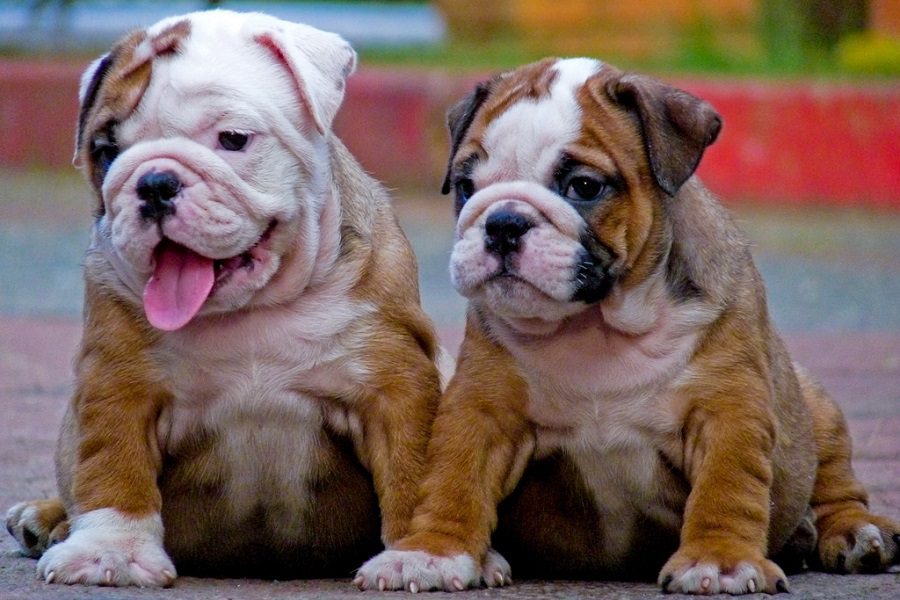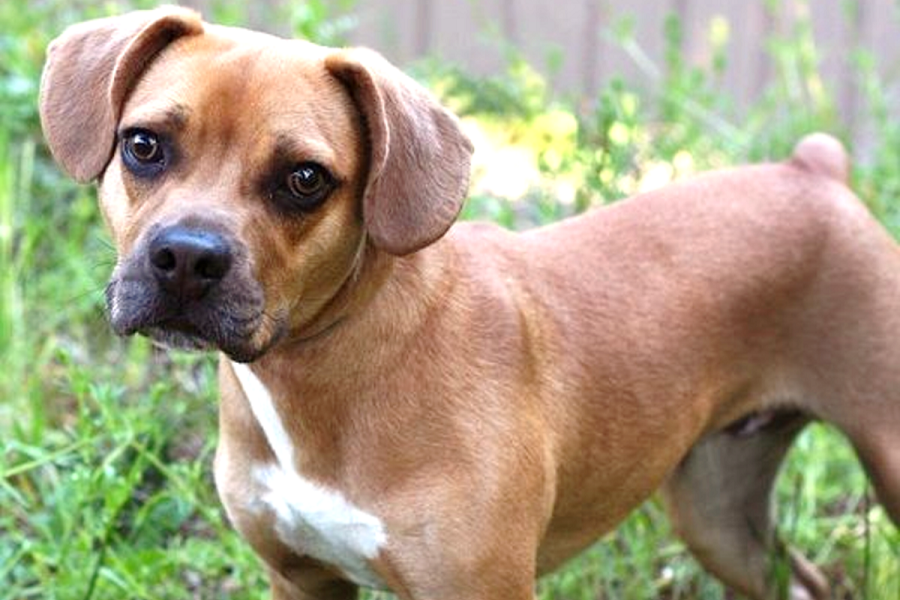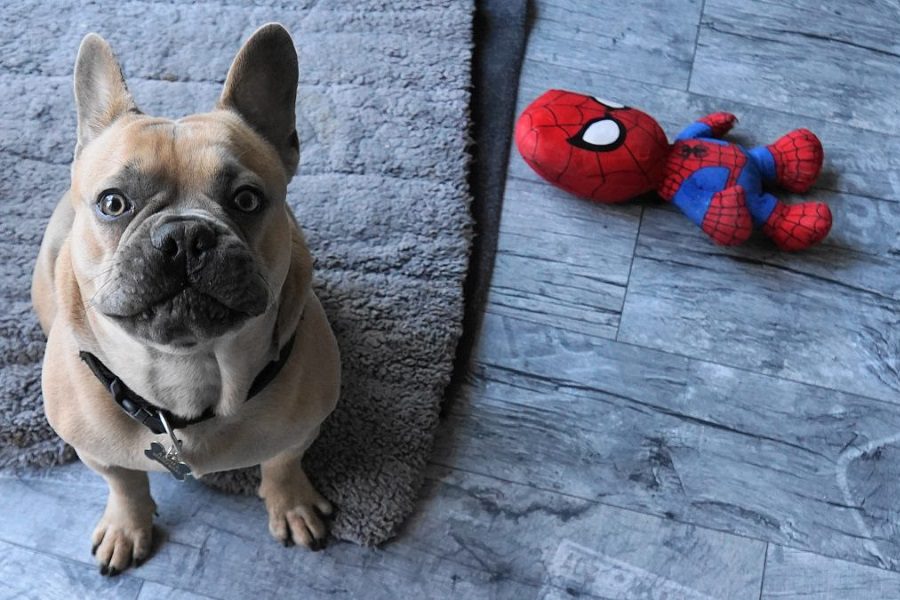Last Updated: 2 years ago
There is nothing more exciting in this world than bringing home a puppy and welcoming them into the family. Oh, if you have children, you can just forget about it!
That little pup is going to be your kid’s best friend, and you instantly become the best parent in the world.
As great as all that is, you’re in for a treat. Puppies are a bundle of fluffy sweetness that is full of happiness and cuteness.
But, like little toddlers, they need to be taught how to behave. That is why you have to be serious about Bulldog training. A bulldog is a complete sweetheart, contrary to its outward appearance.
They are friendly, have a laid-back temperament, and love being surrounded by their humans. You can’t let those puppy dog eyes sway you, though, especially when you’re trying to train them.
Bulldogs can be quite stubborn, and if you aren’t familiar with how to train them, you might get overwhelmed, and quickly too.
As you read this guide, we will explain key bulldog training tips that will help you turn your curious little couch potato into a well-behaved companion.
Bulldog Training Techniques For Puppies
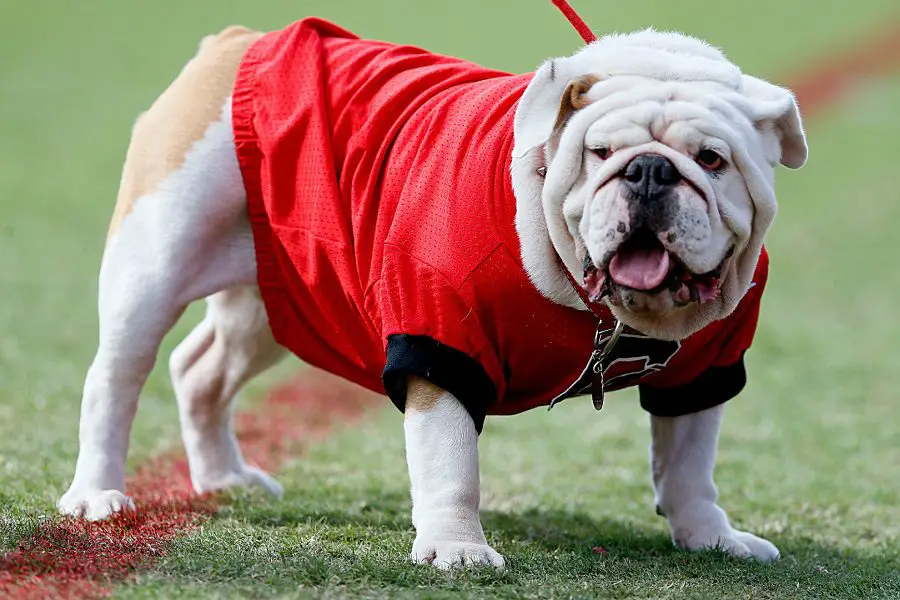
As much as we want to think that training a puppy is going to be easy, that is almost never the case. While they can be the highlight of your day, they can also be quite frustrating.
The key to being successful with your English bulldog training is to be patient and know how to respond to them. When you can do that, you’ll find that the adjustment period is going to be a lot shorter and less stressful, both for you and your pup.
So what should be the first thing to conquer on that extensive bulldog training list?
The folks over at Your Pure Bred Puppy suggest that you should impress upon your puppy a daily routine. Of course, your daily routine is going to be unique, but here are a few things you’ll want to focus on:
- Where your puppy’s food and water bowls are located
- The time of day they will eat
- Where their bed is
- When is bedtime
- When he is to wake up
- Where he can go to the bathroom
- Where his toys are stored
When it comes to having a well-behaved bulldog, routine is going to be your best friend! Routine and maybe a few treats here and there, of course.
Bulldog Training Tips
Food And Water
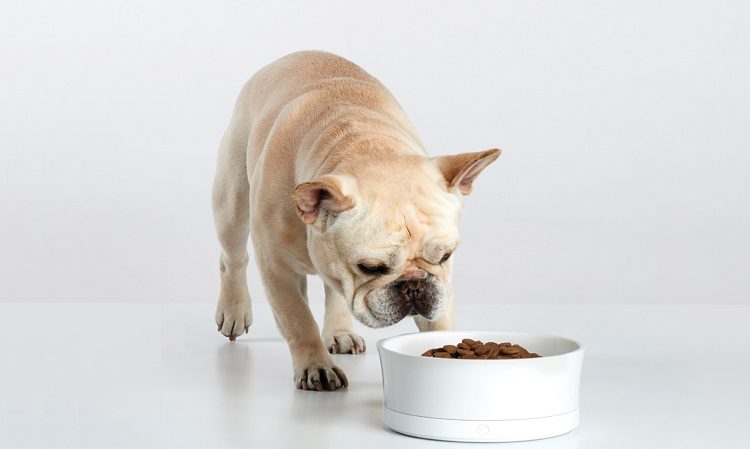
Just like people, your dog is going to get hungry and thirsty throughout the day. This is why we agree with Red White and Bulldogs in that food and water should always be available for your pup.
With that said, you don’t want to leave food out for him after a certain time because you may have an accident in the house.
Ideally, you should serve your pup its last meal of the day about two to three hours before bedtime. For water, only give them a small amount around this time too.
If you stick to the routine of having timed feedings, bedtimes, and potty breaks before the night is over, you shouldn’t have to take your puppy outside more than once. Until your puppy reaches 12 weeks, you may want to follow a schedule plan similar to this one:
- Dinner time is at 6:30 pm
- No more water after 10:00 pm
- Last potty break around 11 pm
- Wake up to take him outside around 2:30 pm and then again at 530am
- Take him outside to go potty at 8:30 am
Throughout the day, leave a bowl full of water out for your puppy in a designated spot.
You can leave a small amount of kibble in a bowl for him to graze on throughout the day and then feed him one substantial meal at dinner time. Or, you could feed him small amounts of food three to four times a day.
Remember that you should take your puppy out several times a day. Some people take their dogs out once every two hours, some do more and others do less. It really depends on how frequently your puppy goes.
Crate Training
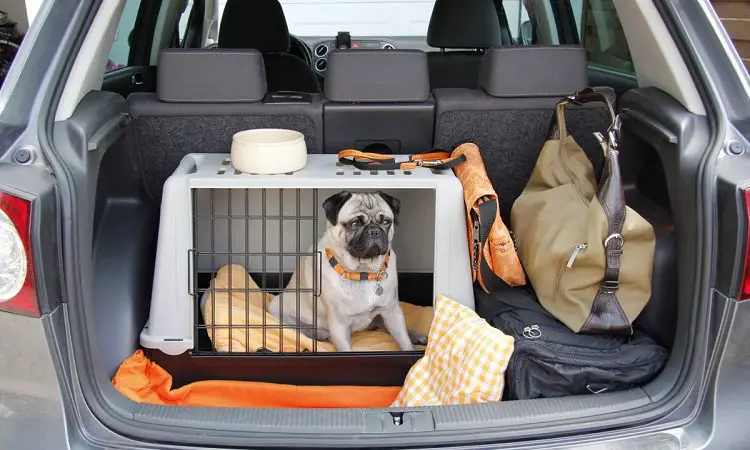
When you’re going through the Bulldog training process, you’ll quickly learn that crate training is going to be your best friend.
One of the reasons experts at Dog Obedience Training Review recommend crate training into your routine is that it will eventually become the place where your bulldog can go to feel safe, secure, and calm. Your dog’s crate can help you with many days to day activities such as:
Housebreaking – The crate is the fastest and most effective way to teach your puppy to go to the bathroom outside. You know the saying, don’t mess where you sleep. Puppies know it too!
Breaking the chewing habit – Puppies like to chew on this, that much everyone knows. You can prevent your curious little puppy from chewing on things by putting them in their crate with the chew toys that you give them.
The whole reason why we use the crate as a bulldog training tool is that it is going to help you establish positive habits and prevent negative and destructive habits—like chewing.
Keep them safe – It’s understandable that you don’t want to keep your bulldog in a crate for a long time, but sometimes it’s necessary.
If your dog does have a penchant for chewing, you can keep them safe in the crate whenever you aren’t able to keep an eye on them. By doing this, you’re preventing them from chewing on dangerous things around the house that could make them sick or even kill them.
Easing separation anxiety – Separation anxiety is a big problem among dogs; however, when you use a crate, your puppy may not be as likely to develop separation anxiety because that is the one place where your dog can be calm, stay out of trouble, and even chew on its toys or get some sleep.
In the crate, your dog is used to being alone, and it will learn that the crate is its safe haven.
Special Crate Training Advice
If you do decide to introduce the crate to your bulldog training routine, you shouldn’t use it as a form of punishment. If you do that, your dog isn’t going to see it as a safe haven, but instead, it will associate the crate with a place it doesn’t want to be.
Potty Training
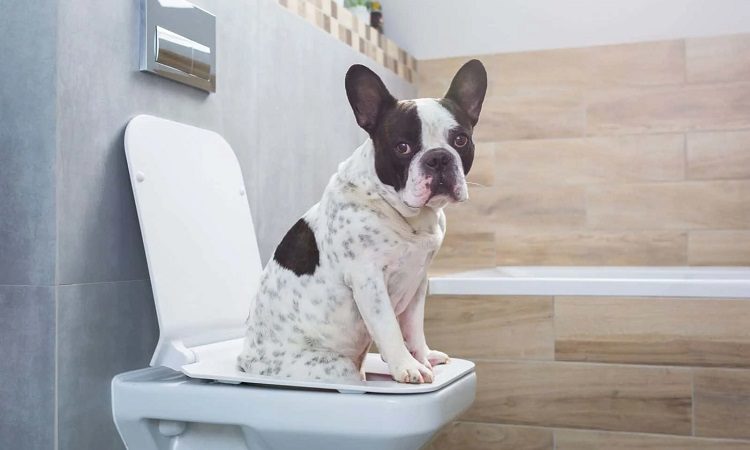
Perhaps the thing most people have an issue with when training their bulldogs is getting them to be housebroken. The key to properly housebreaking your bulldog is by being consistent.
You can do that by making it a point to take your puppy outside to go to the bathroom every two to three hours. Make special trips when they wake up from sleeping or after each mealtime.
Choose a spot outside that is out of the elements so your pup will be comfortable going. This means you should look for a coveted spot, so that when it is raining, snowing, or even full sunlight and it is hot, your dog won’t get wet or too hot (bulldogs don’t do well with extreme temperatures).
Once you’ve chosen the designated spot for the dog, choose a command that lets him know it is time for him to relieve himself. You can choose commands like “potty,” “pee-pees,” or something else.
When your dog is done doing his business, reward him with verbal praise and go back inside right away. This will reinforce the whole reason why you’re taking him outside in the first place.
Keep in mind that you should watch out for accidents in the crate or other places. Be aware of the signs your dog may make when he’s got to relieve himself and take him out ASAP!
As your puppy gets older, you can space out the potty breaks a little more. By the time they are six months old, your dog should be able to go without having to go to the bathroom for at least five hours.
We should also mention that if you live in a condo or somewhere with no yard, you can train your bulldog to use a large litterbox or even a pee pad. It is your personal preference and chooses the potty method that works best for you.
Sleep
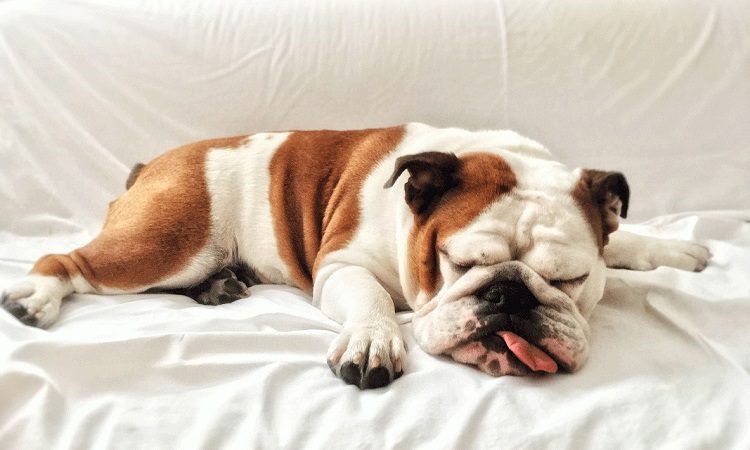
It doesn’t matter what species you are, sleep is very important to staying healthy. With that said, you are going to want to train your dog to actually go to sleep when it is bedtime and not be up all night.
You can do this by putting them in their crate with a soft pet bed and a blanket, or you could let them sleep with you—depending on your preference.
If you opt to make your puppy sleep in his crate, feel free to put their favorite toy in there with them to help them feel safe.
When you put your puppy in his crate for bedtime, make sure you leave him alone. It will work better if you turn off the lights or go into another room.
Just like babies, resist the urge to go to him if he starts howling or making a fuss. You might want to comfort them, but that is why you put their toy and a blanket there.
Your puppy will learn that when they are in the crate and the lights are out, it is time for bed. You just have to stick with it.
Socializing
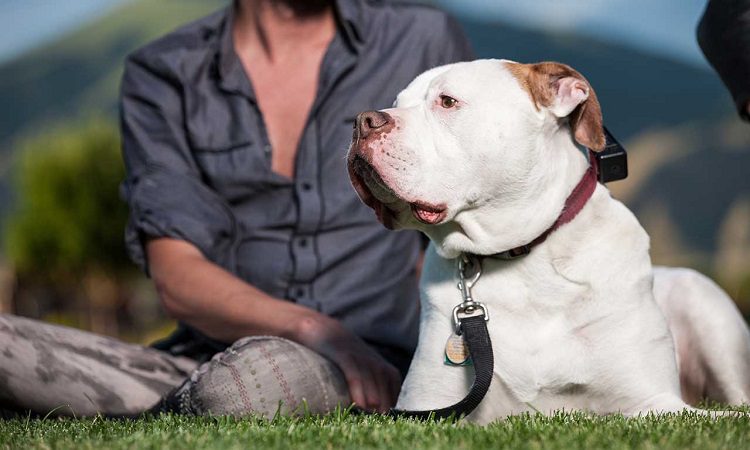
If you look in any bulldog training book, magazine, or article, it will tell you how important it is to socialize your puppy with other people and animals.
While it is true that a bulldog will be probably affectionate and friendly to people, PetCareX points out that they can be aggressive toward other animals if they aren’t socialized with them early on.
Take your puppy to dog parks so they can interact with other dogs and people in a fun setting. Bring them to places like pet stores or other pet-friendly venues. When they behave appropriately in these situations, reward them for helping reinforce the positive experience.
If you want to take out two birds with a single stone, you can’t go wrong with enrolling your bulldog in an obedience training course. Not only will they learn commands, but they’ll get plenty of exposure to other people and animals!
Commands
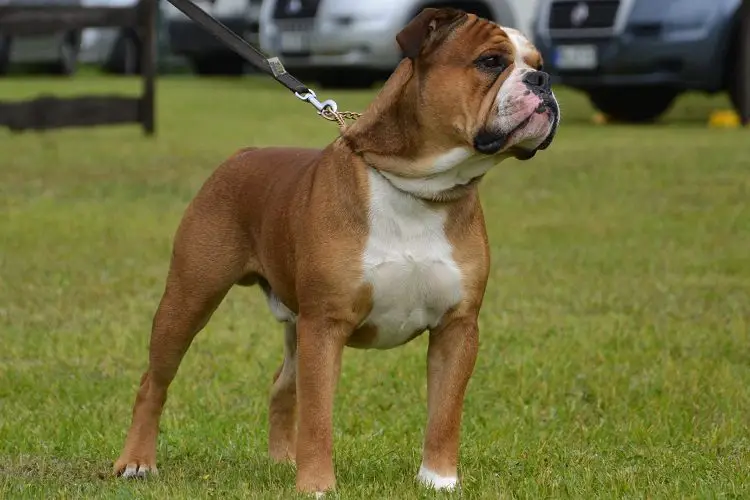
It’s important that you teach your puppy verbal obedience commands like “sit,” “stay,” “down,” and “come.” When you are training your bulldog to follow these commands, you’ll want to keep the training sessions brief—no more than 10 minutes per day.
Why?
These short bouts of training are much more effective in keeping your puppy’s attention.
While you are doing the bulldog training for commands, you’ll want to reward them when they do what you tell them to with a treat or verbal praise. Bulldogs tend to be motivated by food, as well as other positive reinforcement techniques, so these will help you get the desired results.
How do you train your puppy to do the desired command with a treat? Simply hold a treat in your hand just above your dog’s head.
When you tell him to sit, continue to hold the treat out of his reach while nudging his rear end down in the sitting position. When he does finally sit, reward him with a said treat. Continue doing this, and he will quickly associate “sit” (or any other command) with a treat.
On top of action commands, you also want to teach your pup safety commands like “leave it” or “drop it.” These types of commands are especially useful for English bulldogs because they can get very possessive over food.
Should a piece of food drop on the floor and you don’t want your dog to get it, these commands can prove to be quite useful.
Of course, these commands aren’t exclusively intended for food. You can use them if your dog is being aggressive with another animal or if they take something, like a shoe or piece of clothing.
To teach your pup these commands, PetCareX recommends that you start off by giving your dog its favorite toy. When they have their beloved toy in their mouth, tell them to “drop it” and present them with a treat. The second the toy is dropped, reward them with the treat.
You can teach your dog how to “leave it” in a similar way. Put your dog on its leash and tell him to sit or stay. Put a toy just out of their reach and tell them to leave it.
Use the least to stop the dog from getting the toy, and once he sits without trying to snag the toy, then you can finally reward them with the treat.
Exercise And Grooming
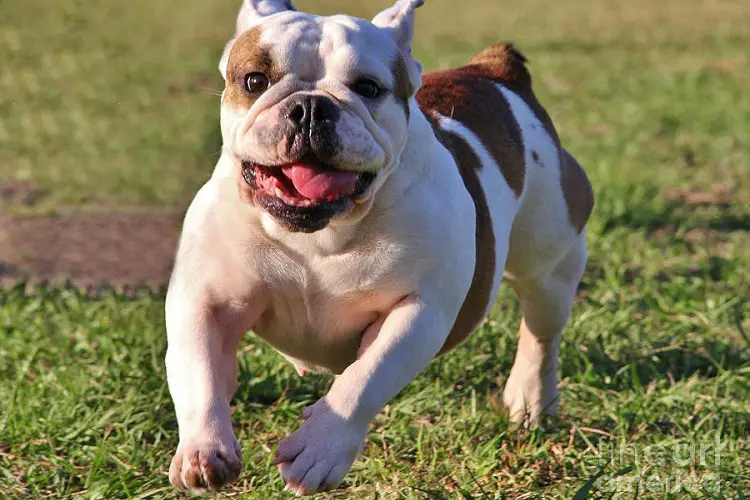
Just like people, it is very important that your dog has a healthy exercise and grooming regime. However, the amount of exercise is dependent on his size and his breed.
Bulldogs, fortunately, don’t need a whole lot of exercise—a good walk is all they really need, especially as a puppy.
Walking your puppy isn’t just important for its health, but Bulldogs World points out that these walks are perfect opportunities for them to explore, experience different stimuli, and interact with new people and/or dogs.
These walks help them to grow up to a sociable dog who is content and well-adjusted.
When you are taking your pup for a walk, choose a collar that fits properly (ideally you should have enough room to be able to slip two fingers between his neck and the collar) and a leash that only extends six to ten feet away.
When you’re doing the bulldog training exercises, you don’t want to use a retractable least because it is harder to keep control of the dog.
When it comes to grooming, it’s a good idea that you train your bulldog to relax and behave, especially when it is bath time, lest you have a mess on your hands.
It’s always a great idea to get your dog into regular grooming habits when they are young, that way you won’t have any trouble when they are younger.
Speaking of bath time, dogs only really need a bath when they’re dirty or under the advice of your vet.
When you do decide it’s time to give them a bath, make sure the weather is agreeable—you don’t want to give them a bath, and it’s cold due to the air conditioner or it being cold outside, as they could catch a chill.
Also, only choose some soap that is designed for dogs when you’re bathing them. You might think your shampoo or soap is fine, but the formula for our shampoo isn’t going to be the same, and it could irritate their skin.
We should also mention that when you do groom your dog, you’ll want to wash their bedding as well. What’s the point of washing them or even giving them a good brushing if they are going to lie in a dirty bed?
How To Handle An Aggressive Dog
Typically speaking, Bulldogs aren’t naturally aggressive dogs, but on the off chance your pup acts out and is more aggressive than you’d like, you’re going to want to correct it as soon as possible.
How do you do that?
Red White and Bulldogs tells us that a bulldog will turn aggressive as a result of being neglected, abused, or improperly trained when they were young—or the owners lack leadership.
You have to make sure your bulldog knows that you are in charge of always being calm and assertive whenever you are trying to train them.
This is especially important when they are young. Like children, your bulldog has to be able to receive your message whenever you set any rules or boundaries for them.
When you are training, you should never let your frustration get the best of you because the way you behave will be a determining factor in how your dog behaves!
So whenever you feel yourself getting aggravated, stop the training and give yourself and your pup a chance to decompress.
You may even consider calling it a day and resuming the bulldog training exercises the next day. By taking these breaks, you’ll find that your bulldog will behave the way you want with little to no problems.
Conclusion
Families choose to welcome a bulldog into their home because Bulldogs are lovable, friendly, and incredible companions.
Although they may have a stubborn streak and might not want to listen to you right off the bat, you can shape them into the companion you’ve been dreaming of with a little bit of patience, perseverance, and help.
Bulldog training, especially if you’ve never owned a dog before, may feel like a scary endeavor, but it doesn’t have to be.
There are many bulldog training books, articles, magazines, and even tools available that can help you achieve the kind of obedience that you’re looking for from your dog.
We hope that the information you’ve learned in this article will provide you with some insight into how to train your bulldog.
A bulldog is a terrific addition to any family, you just have to remember that Bulldogs respond best to positive reinforcement and a few treats along the way don’t hurt either!
Resources:

